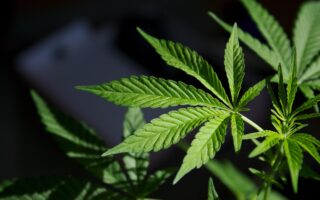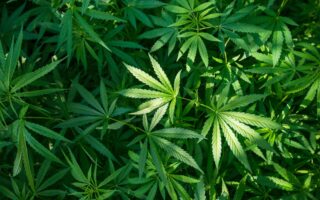Title: “Is Weed an Opioid? Unraveling the Complexities of Cannabis and Pain Relief”
In a world increasingly fascinated by the nuances of pain management and the substances that influence our physiological experiences, one question looms large: Is weed an opioid? As society navigates the murky waters of analgesics, the lines between various classes of drugs can often blur, leaving many in search of clarity. Cannabis, hailed for its therapeutic properties, has sparked debate and curiosity — often hailed as a natural remedy yet sometimes shrouded in misconceptions.
By delving into the realms of botany, chemistry, and pharmacology, this article seeks to dissect the relationship between cannabis and opioids, exploring the different mechanisms through which these substances interact with our bodies and the implications for pain relief. With a neutral lens, we will traverse the landscape of medical research, cultural perceptions, and evolving legislation surrounding both cannabis and opioids, striving to illuminate the truth behind this intriguing inquiry. Join us as we embark on this exploration, aiming to separate fact from fiction and enhance our understanding of these powerful compounds.
Table of Contents
- Understanding the Distinct Nature of Cannabis and Opioids
- Exploring the Therapeutic Uses of Cannabis in Pain Management
- Comparative Analysis of Addiction Risks Between Cannabis and Opioids
- Recommendations for Safe and Responsible Use of Cannabis in Pain Relief
- Q&A
- In Summary
Understanding the Distinct Nature of Cannabis and Opioids
To fully appreciate the differences between cannabis and opioids, it is essential to consider their origins, mechanisms, and effects on the human body. Cannabis, derived from the Cannabis sativa plant, consists primarily of cannabinoids such as THC and CBD. These compounds interact with the endocannabinoid system, influencing mood, memory, appetite, and pain perception. On the other hand, opioids are synthetic or natural compounds that bind to opioid receptors in the brain, effectively altering pain response and creating feelings of euphoria. This fundamental difference in their interactions with the body highlights that cannabis is not an opioid, but rather a distinct category of its own.
The potential therapeutic uses of both substances are significant but vary greatly due to their unique properties. Factors to consider when comparing cannabis and opioids include:
- Medical Applications: Cannabis is often explored for chronic pain, anxiety, and inflammation, while opioids are primarily used for acute pain relief.
- Side Effects: Cannabis may cause dizziness and fatigue, whereas opioids can lead to respiratory depression and heightened addiction risk.
- Dependency Potential: Prolonged opioid use often leads to physical dependence while cannabis dependency is less commonly reported.
Exploring the Therapeutic Uses of Cannabis in Pain Management
Cannabis has emerged as a potential ally in the management of chronic pain, particularly as patients seek alternatives to traditional opioid medications. Striking a delicate balance, cannabis interacts with the endocannabinoid system in the body, which plays a crucial role in regulating pain and inflammation. Many users report relief from various types of pain, including neuropathic discomfort and inflammatory conditions, prompting medical professionals to explore its therapeutic potential. Benefits of cannabis in pain management include:
- Reduced inflammation - Cannabinoids may help alleviate inflammation-related pain.
- Enhanced pain relief - Some studies suggest cannabinoids provide superior pain relief over placebo.
- Lowered dependence on opioids - Patients using cannabis may reduce their opioid intake, lowering the risk of dependency.
The varying effects of cannabis on pain can be attributed to its complex makeup of cannabinoids like THC and CBD, each offering different therapeutic benefits. Comparisons highlight key differences between opioids and cannabis in pain management:
| Aspect | Opioids | Cannabis |
|---|---|---|
| Dependence Risk | High | Lower |
| Side Effects | Nausea, constipation, drowsiness | Fatigue, dry mouth, dizziness |
| Duration of Relief | Short to moderate | Varies widely |
Comparative Analysis of Addiction Risks Between Cannabis and Opioids
The landscape of addiction is complex, particularly when comparing substances like cannabis and opioids. While both have psychoactive properties, their potential for dependence and addiction varies significantly. Cannabis, often viewed as a less harmful alternative, poses its own risks primarily related to frequency of use and consumption patterns. Studies suggest that the likelihood of developing a cannabis use disorder is around 9%, which increases to about 17% for those who start using in their teens. In contrast, opioids carry a much higher risk of addiction, with an estimated 21% to 29% of users developing a dependence. The body’s response to opioids can lead to increased tolerance and severe withdrawal symptoms, factors that are less pronounced in cannabis use.
When analyzing the severity of addiction, it’s essential to consider various factors, including withdrawal symptoms, social implications, and overall societal impact. Comparatively, the withdrawal symptoms of opioids can be debilitating and include intense cravings, discomfort, and a range of physical ailments. For cannabis, withdrawal is typically milder and may include irritability and insomnia. Here’s a concise look at some additional points:
| Aspect | Cannabis | Opioids |
|---|---|---|
| Potential for Dependence | Low to Moderate | High |
| Withdrawal Severity | Mild | Severe |
| Craving Impact | Moderate | Severe |
| Legal Status (Various Regions) | Changing, often legalized | Generally illegal without prescription |
Recommendations for Safe and Responsible Use of Cannabis in Pain Relief
The integration of cannabis into pain management strategies demands a careful and informed approach. Users should start by consulting healthcare professionals familiar with cannabis use, especially if they are already taking other medications or have underlying health conditions. Self-dosing without guidance can lead to unexpected interactions or side effects. It’s essential to choose the right strain and method of consumption, such as oils, edibles, or vaporizers, that best aligns with your pain relief needs. Furthermore, always begin with a low dose and gradually increase as needed to find the optimal balance without overwhelming effects.
In considering the legal and social implications of cannabis use, it is vital to remain updated on local laws and regulations regarding cannabis. Responsible consumption should also include avoiding use before operating heavy machinery or driving, as it can impair coordination and judgment. Additionally, individuals should monitor their body’s response to cannabis and practice mindful consumption, noting any changes in pain levels or side effects. Engaging in discussions with support groups or community resources can provide comfort and shared experiences, reinforcing the importance of using cannabis responsibly as a part of a comprehensive pain management plan.
Q&A
Q: What are opioids, and how do they differ from cannabis?
A: Opioids are a class of drugs that include both prescription medications like morphine and fentanyl, as well as illegal substances such as heroin. They primarily work by binding to specific receptors in the brain to relieve pain, producing feelings of euphoria but also carrying risks of addiction and overdose. In contrast, cannabis, commonly known as weed, contains compounds called cannabinoids, like THC and CBD. These interact with the body’s endocannabinoid system, affecting mood, pain perception, and various other functions, but they do not share the same chemical structure or primary mechanisms of action as opioids.
Q: Many people use both cannabis and opioids for pain relief. Does that mean they are the same?
A: While it’s true that both cannabis and opioids can be used to manage pain, they operate through different pathways in the body. Opioids directly target opioid receptors, leading to significant pain relief and potential side effects, like dependency. On the other hand, cannabis influences various neurotransmitter systems and may help with pain by reducing inflammation and altering pain perception without the same degree of risk for physical dependence. Therefore, while they can both be part of pain management strategies, they are fundamentally different substances.
Q: Can cannabis be classified as an opioid since it’s sometimes used in similar contexts?
A: No, cannabis cannot be classified as an opioid. The classification of substances is based on their chemical structure and pharmacological effects. Opioids have a distinct chemical composition and bind predominantly to opioid receptors, while cannabis contains cannabinoids, which interact with cannabinoid receptors. This classification distinction plays a significant role in understanding their effects, potential for addiction, and how they are regulated.
Q: Are there any risks associated with using cannabis in a similar way to opioids?
A: Like any substance, cannabis carries its own set of risks. While many view it as a natural alternative to more potent painkillers, excessive use can lead to its own forms of dependency, cognitive impairment, or mental health issues, especially in vulnerable populations. Furthermore, the potency of cannabis products available today—often much higher than those used in traditional medicinal applications—can raise concerns about overconsumption and adverse side effects. Thus, while cannabis may be safer than opioids for some, it is not without its dangers.
Q: Is cannabis safe to use as a substitute for opioids?
A: The use of cannabis as a substitute for opioids is a topic of ongoing research and debate. Some studies suggest that cannabis may help reduce opioid use and associated side effects for certain patients, particularly those with chronic pain. However, the transition should be approached cautiously and under medical supervision. What works for one individual may not work for another, and the effects of cannabis can vary widely based on strain, dosage, and individual physiology. It’s always best to consult a healthcare provider when considering such decisions.
Q: What should people consider when thinking about using cannabis for pain management instead of opioids?
A: Individuals considering cannabis for pain management should assess a variety of factors, including the nature and intensity of their pain, previous experiences with cannabis, their medical history, and potential interactions with other medications. It is also vital to research state laws regarding cannabis use, as regulations vary widely. Consulting a knowledgeable healthcare professional can provide personalized insights and help ensure any treatment strategy is safe, effective, and compliant with local laws.
—
while cannabis and opioids may sometimes appear in similar contexts, their differences in classification, mechanism of action, and risk profiles highlight the importance of nuanced understanding in their uses for pain management.
In Summary
In the grand tapestry of human experience, the question of whether weed qualifies as an opioid invites us to explore the nuances of botanical and medicinal classification. While both substances interact with the body’s pain mechanisms, they do so through distinctly different pathways and origins. As our understanding of cannabis deepens, we must remain vigilant in distinguishing between its unique properties and those of opioids, which have their own specific roles in the realm of pain management and addiction.
Ultimately, the dialogue surrounding these substances is far from over. As researchers continue to peer into the complex interplay of cannabinoids and the body’s endocannabinoid system, the potential for new therapies and insights remains vast. Whether viewed through a lens of medicine, legality, or personal choice, cannabis and opioids both occupy important places in our society’s ongoing narrative about health and healing.
As we navigate this intricate landscape, let us approach each discussion with curiosity and an open mind, grounded in facts and the latest research. After all, the journey toward understanding is often as important as the destination itself. Thank you for joining us in unraveling this complex question; may it inspire further inquiry and reflection.

